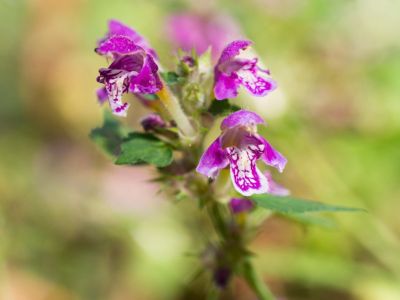What is Spotted Deadnettle?
Spotted deadnettle (Lamium maculatum) grows as a spreading mat of herbaceous stems and leaves. The small leaves are speckled with spots, which earns the plant its name. It is most attractive during cooler periods and may die back when temperatures soar. The plant blooms in late spring from May to June and produces flowers in lavender, pink, purple, and white. Spotted deadnettle ground cover grows about 6 to 12 inches (15-31 cm.) high and can spread out 2 feet (61 cm.) wide. The attractive foliage has a silvery cast and shows well in deep shadows. Spotted deadnettle is evergreen in temperate regions and a superior performance perennial.
What is Spotted Deadnettle’s Growing Conditions?
Deadnettle plant info would not be complete without a discussion of the site conditions this plant requires. If you plant it in a low light area, this hardy specimen can thrive in sandy, loamy, or even lightly clayed soils. Spotted deadnettle ground cover prefers moist soil but can perform well in a dry area. However, the plant will die back in hot summer heat when there is not enough moisture provided. Moist soils must be well-drained to promote the best growth.
Growing Spotted Deadnettle
Growing spotted deadnettle can be accomplished in USDA plant hardiness zones 3 to 8. Higher heat areas are not suitable for the plant. Spotted deadnettle may be started from seed that is planted out after all danger of frost has passed. The plant is also easy to grow from stem cuttings or crown division. The stems naturally root at internodes and these will establish as separate plants. Growing spotted deadnettle from stems is a cheap and easy way to spread this terrific shade plant.
Care of Spotted Deadnettles
The plant should be pinched back for a fuller, bushier look. However, if left unpinched, the long stems are also attractive as trailing accents in a potted display. Provide medium moisture and spread compost to enrich the soil around the plant’s roots. Spotted deadnettle ground cover has few pest or disease problems. The only real concern is damage to the ornamental leaves by slugs or snails. Use copper tape around containers and beds or an organic slug pest control product. Even with good care of spotted deadnettles, they will die back in August or early fall. Don’t worry. The plant will regrow in spring and produce an even thicker batch of foliage.
